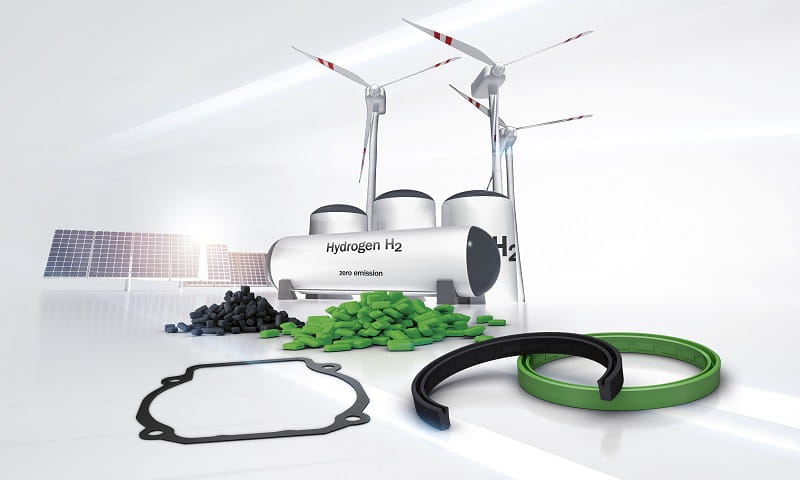Trelleborg amplía sus capacidades de ensayo de hidrógeno

The development is part of Trelleborg’s strategic goal to be a leader in hydrogen sealing and testing to help customers navigate the challenges of the entire hydrogen value chain - generation, storage and transportation, end use and future hydrogen applications.
Konrad Saur, Vice President of Innovation & Technology, says: “Customers often do not know the testing specifications for hydrogen. In the absence of agreed hydrogen test procedures, people reference established testing standards for certain niche applications or oil and gas applications. However, these tests are not representative of the requirements for hydrogen applications, so Trelleborg has established a hydrogen application-specific test regime based on our expert knowledge of hydrogen sealing requirements.”
Testing capabilities offered at the facility will be hydrogen leak detection, compatibility, dynamic testing and permeation testing which are all critical criteria for sealing hydrogen. Engineering experts will perform tests that replicate worst case application conditions for rapid gas decompression, where hydrogen in a high-pressure system can be absorbed into a seal and if the pressure is suddenly relieved, gas trapped in the seal can expand, potentially causing the seal to blister and crack as the gas tries to escape. There will also be testing capabilities for pressures up to 15,000 PSI/1,034 bar and across all temperature ranges from cryogenic to above 350 °F/180 °C, and environmental thermal cycle testing at various pressure profiles.
John Mclaughlin, Director of Research and Development Services, says: “Used as both energy storage and as fuel, hydrogen is potentially transformative in the battle to reduce emissions. Research by Deloitte predicts over 9 trillion USD in investment for hydrogen, making the industry bigger than the oil and gas sector and automobile market combined.
“The market needs for hydrogen sealing components range from standard products to highly engineered solutions where few in the industry have extensive experience. With our current testing capabilities and the ones we will bring online with this additional facility, Trelleborg can support almost all hydrogen sealing demands. We have materials and solutions that not only meet today’s accepted criteria but are ready to scale up in future industrialized processes. We also are not dependent on external labs that are increasingly busy, and we encourage customers to inquire about how we can support their hardware development and testing requirements.”
Trelleborg recently launched the H²Pro™ range of sealing materials for every application of the hydrogen value chain, including H²Pro™ EBT25, a new ethylene propylene diene monomer (EPDM) for high-pressure environments across a wide range of temperatures, and Zurcon® H²Pro™ ZLT, a unique thermoplastic polyurethane (TPU) for very low temperatures.
H²Pro™ materials are also available in a range of other compounds and seal profiles including:
- Turcon® polytetrafluoroethylene (PTFE) and thermoplastic compounds for use as Varilip® lip seals
- V-Stack seals for use in static and dynamic applications with cryogenically compressed hydrogen and liquid hydrogen (LH²)
- Fluorocarbon rubber (FKM) seals for blue hydrogen
- Lower-hardness EPDM compounds and silicone compounds for lower-pressure applications
- Metal seals for static LH² applications
- Wear-resistant composite bearings and piston rings for compressor applications
Trelleborg is dedicated to leading in hydrogen sealing and testing solutions. With our new testing lab and H²Pro™ sealing materials, we're fully prepared to meet customer demands for hydrogen applications. For details on H²Pro™, visit: https://www.trelleborg.com/en/seals/your-industry/hydrogen-sealing.